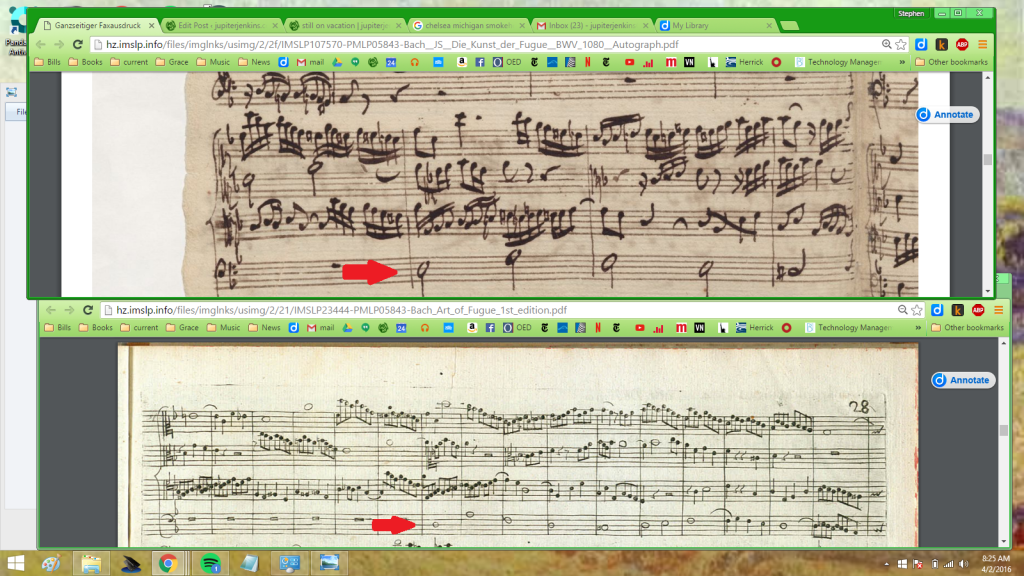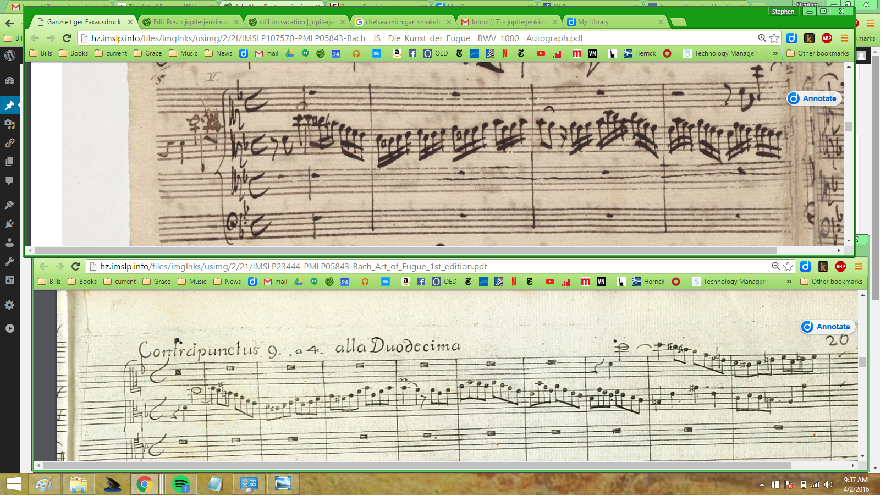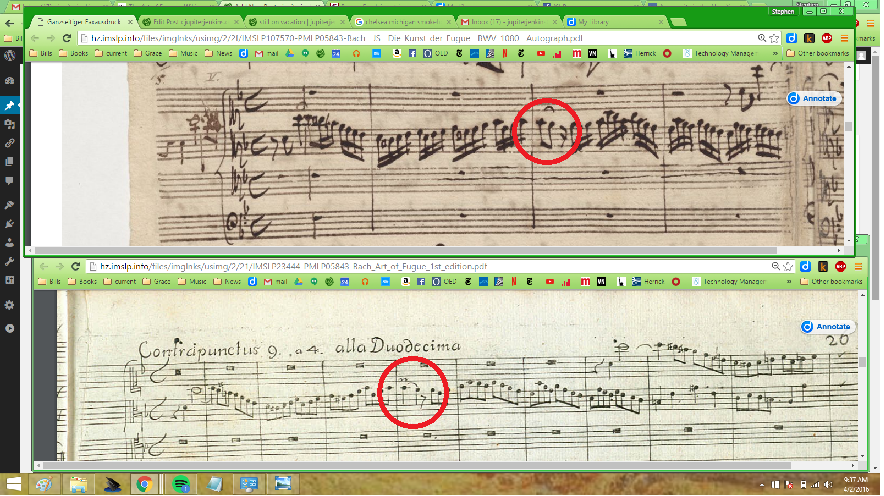Today we drive home. I think it’s been a good time away. I also don’t think I was quite as burned out this time. My blood pressure came down to 130 over something. That’s an 8 point fall from yesterday. Just keeping you up to speed. Ahem.
After Greek this morning I turned to further comparison of versions of “The Art of Fugue.”
I think it’s interesting that the movement I am trying to learn (9 in Czerny and the 1751 publication and V in the Bach autograph) is written in two ways: with the quarter note getting the beat in the autograph and with the half note getting the beat in the other two.
I think quite a bit about measures and meter. If you look above at the section where the theme of the entire work enters you can see clearly there is a bit of a different feel. Bach’s has two half notes in a measure. Metrically this can be seen as more of a “down up” feeling. The second has one whole note per measure. This can have a continual “down” feeling on each note.
If you look at the beginning the two versions, you can see that Bach has a line in the middle of his first measure.This would make it more like 2/4. But then he goes on with 4 beats per measure. If you compare the second entrance you can see that in the second version, the fugal answer (the second statement) is identical to the first rhythmically occurring in the same way. You could count it “& – 2”. But in the older version when this entrance occurs, Bach has shifted it from beats 2 and 3 (if you think of the first measure in 4) to beats 3 and 4. This is typical of many Baroque composers. They shift material from a strong position to a weaker one metrically. Not sure exactly what it means but this is lost in the later version.
Also the autograph has many fewer ornaments than the published version.
You can see that whoever did the 1751 edition added a “trillo” (as Bach calls them in his ornament table).

I am doing a comparison of these two editions and making notes, but when I arrived at this fugue, I got a bit bogged down in it because I’m learning it.
It looks like we are going to leave sometime this afternoon to return home. Leigh has lessons this morning. Mark is meeting with one of his writer groups and won’t be home till after lunchtime. He and Eileen are going to some weaver things together. Then we’ll be on the road.
Barney Frank is not impressed by Bernie Sanders.
Frank is always worth listening to. He sounds off on several issues here. I also copied links from this article to read in the future:
President Obama’s Interview With Jeffrey Goldberg on Syria and Foreign Policy – The Atlantic
and
Don’t Break Up the Banks. They’re Not Our Real Problem. – The New York Times
The latter is by Steve Eisman, the real life person that Steve Carell portrays in the movie, The Big Short.

Learning From Obama – The New York Times
I think Krugman is often spot on and he is in this article. One of the commenters pointed out that President Obama is one world leader who has accomplished quite a bit in his two terms, more than most other world leaders in the same environment. Plus there has been a concerted effort to block everything he tried to do by the opposition. I am not a 100% fan of his presidency, but I do think it’s amazing how much he has done.
Activist Says China Didn’t Allow Her to Receive Award in U.S. – The New York Times
Cracking down.
Anonymity in the New York Times: By the Numbers — FAIR
I do admire the NYT but it is far from perfect.


